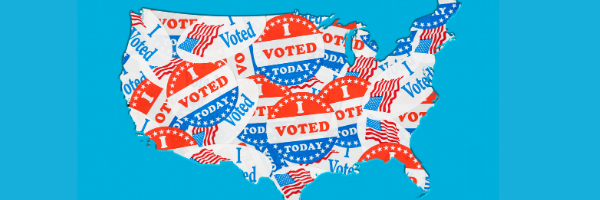Welcome to the Friday, Nov. 20, Brew. Here’s what’s in store for you as you start your day:
- Legislative control of redistricting changed in New Hampshire, Vermont after Nov. 3 elections
- Election certification dates and next week’s election deadlines
- Friday trivia: Which state voted Republican in the presidential election and Democratic in its gubernatorial race?
Legislative control of redistricting changed in New Hampshire, Vermont after Nov. 3 elections
We’ve been busy analyzing this month’s election results and the effects they may have on politics and governance. This includes topics such as trifectas, triplexes, and the status of veto-proof majorities in state legislatures. Another area we’re tracking is how the results affected legislative control of redistricting.
Redistricting is the process of drawing new congressional and state legislative district boundaries. It occurs every 10 years after the publication of the decennial United States Census. Each state determines its own redistricting method.
Partisan control of redistricting changed from their post-2018 status in two states—New Hampshire and Vermont—as a result of the Nov. 3 elections:
- Both chambers of the New Hampshire legislature switched from Democratic to Republican control. Republicans gained a net 57 seats in the state House—giving them a 213-187 majority—and a net four seats in the state Senate, for a 14-10 majority. New Hampshire’s legislature will draw congressional and state legislative district lines in 2021, and the governor, Chris Sununu, is Republican.
- Vermont’s redistricting process will occur under divided party control in 2021. Before the election, Democrats and third-party representatives who caucus with Democrats had supermajorities in both chambers of Vermont’s state legislature. Republicans had a net gain of three seats in the state House, meaning Democrats no longer have supermajority status in that chamber. The Democratic-controlled Vermont legislature will develop redistricting plans next year but will not have the two-thirds supermajority in each chamber necessary to override a possible veto from Republican Gov. Phil Scott.
Thirty-four states grant their state legislature control over congressional redistricting, and 35 give the legislature control over state legislative redistricting. After the Nov. 3 elections, the partisan control for these states will break down as follows:
- Republican legislatures control 20 congressional and state legislative redistricting processes.
- Democratic legislatures control 10 congressional redistricting processes and 11 state legislative redistricting processes.
- Four congressional and state legislative redistricting processes are under divided party control.
The remaining states employ independent or political commissions for their redistricting process.
Election certification dates and next week’s election deadlines
Next week may include the Thanksgiving holiday, but it will be a busy week for states to certify their Nov. 3 election results. Between Nov. 23 and 25, 12 states and the District of Columbia have election certification and/or canvassing deadlines:
Nov. 23: Kentucky, Maine, Michigan, Pennsylvania, and Utah
Nov. 24: District of Columbia, Indiana, Minnesota, New Mexico, North Carolina, and Ohio
Nov. 25: Alabama and Alaska
Five states—Arizona, Colorado, Iowa, Montana, and Nebraska—certify their election results Nov. 30.
To date, election certification and/or canvassing dates will pass today or have passed in 15 states:
• Nov. 5: Delaware
• Nov. 10: Louisiana, Oklahoma, South Dakota, and Vermont
• Nov. 11: South Carolina and Wyoming
• Nov. 13: Mississippi
• Nov. 16: Virginia (actual certification took place on Nov. 18)
• Nov. 17: Florida
• Nov. 18: Arkansas, Idaho, and Massachusetts
• Nov. 20: Georgia and North Dakota
By the end of next week, certification and/or canvassing deadlines will have passed in 27 states and the District of Columbia.
Friday trivia: Which state voted Republican in the presidential election and Democratic in its gubernatorial race?
We’ve been analyzing election results since Nov. 3, and earlier this week, we highlighted those states that voted for one party’s candidate for president and the other major party’s candidate for governor. Eleven states held gubernatorial elections this year.
Joe Biden (D) won two states—Vermont and New Hampshire—in the presidential race at the same time voters re-elected their Republican governors: Chris Sununu (N.H.) and Phil Scott (Vt.). A third state voted for President Donald Trump (R) and elected a Democratic governor. Can you guess which one?
Which state voted Republican in the presidential election and Democratic in their governor’s race?


